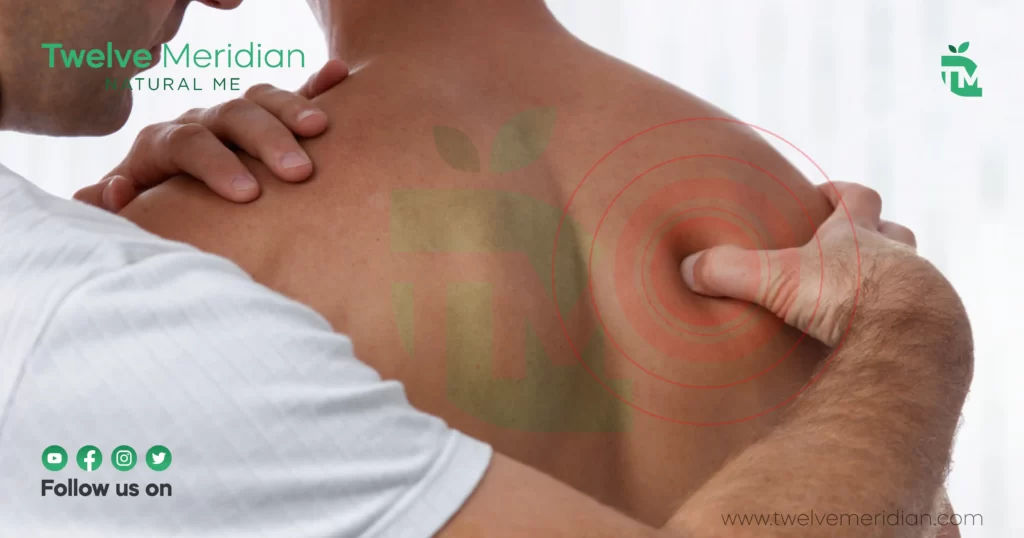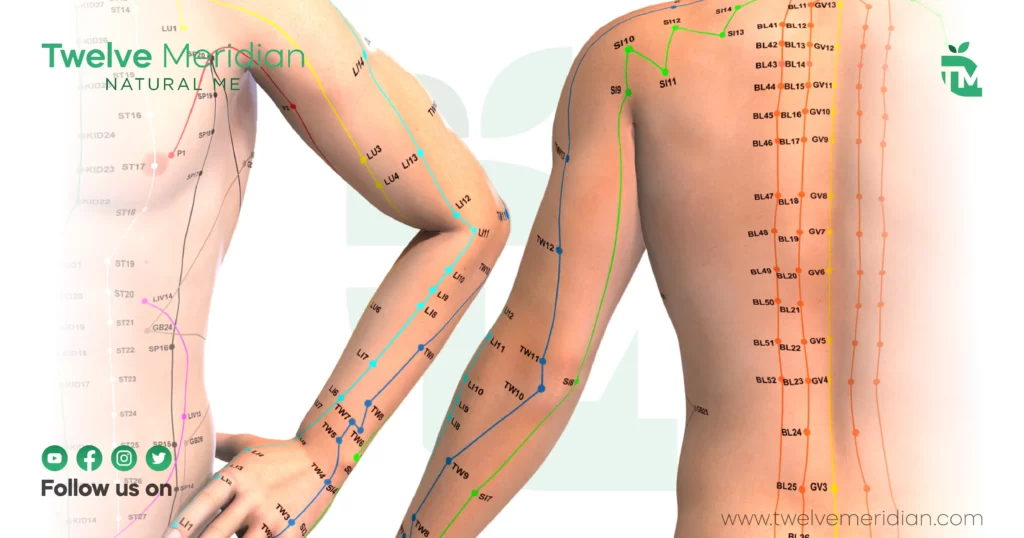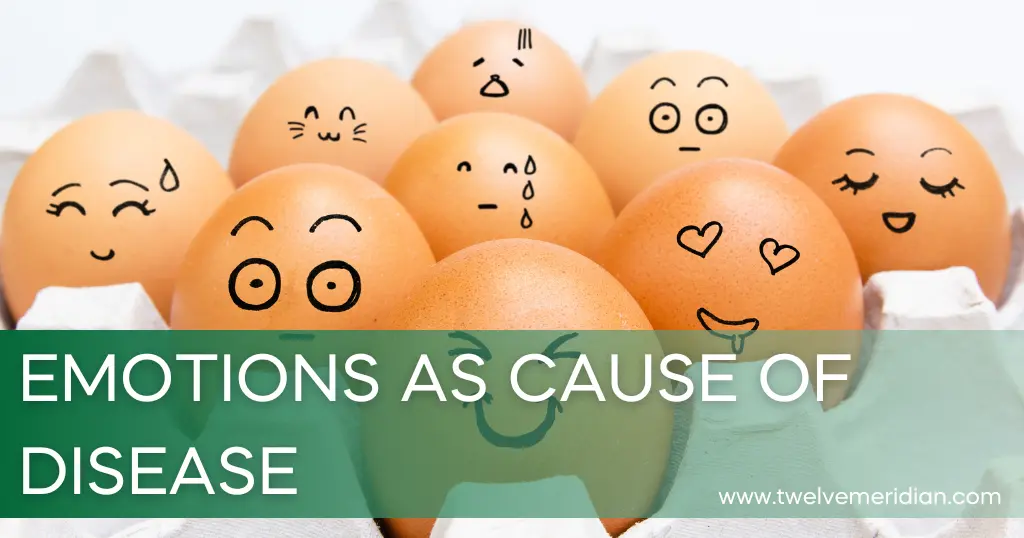Topic: How Does Acupressure Work Scientifically-TCM | Twelve Meridian
Acupressure is a therapy that works through pressurizing specific points called the acupoints in our body. It aims to reduce pain, release muscle tension, increase blood circulation, and get into deep relaxation. Acupressure can help alleviate headaches, back pain, and various other ailments.
The acupressure technique also promotes soft tissue healing, which speeds up recovery. Thus, we see that Acupressure is helpful in multiple conditions to reduce or cure them.
What is Acupressure?


Acupressure is a manual therapy common practice in treating pain and muscle tension. In this, fingers are gently pressed onto critical points on the body to replicate pain and muscle relief. Acupressure is helpful to treat pressure points in muscles and soft tissues.
A trigger point is a neuromuscular point when a body muscle and a nerve contract and cause discomfort.
When this meeting point feels pressured, it frequently causes pain and muscle spasms. Pain also decreases when the acupressure technique is used by stopping or causing interruptions to pain messages to our brain and promoting deep states of relaxation.
Understanding the concept of Acupressure
Recognize the concept of Acupressure. Acupressure work on Asian Bodywork Therapy goes back to 5,000 years.
Acupressure is based on the placement of fingers and applying pressure to the pressure points on the body.
The Acupressure points are along channels known as meridians. As a result, pressurizing these areas will relieve the tension and increase blood flow.
How is Acupressure beneficial?
Acupressure is beneficial with recovery from after injuries effects. Scar tissue formation increases tension, and pain can result from soft tissue injuries.
Acupressure is an effective method for reducing stiffness and stress by removing scar tissue.
The acupressure technique involves applying deep pressure to an area of damage to restrict blood flow temporarily. As a result, Fresh blood circulation is stimulated following the pressure release to that area, allowing and enabling nutrients and oxygen supply.
The tissue healing process begins slowly and gradually. Applying deep pressure to scar tissue breaks down fibrous connective tissue and fosters tissue fiber realignment.
Acupressure is also helpful in curing pain. Acupressure is a common remedy for muscular trigger points.
Trigger points are areas of the body that are sensitive and cause irritation and discomfort. Localized pain can be dull or sharp, and one can feel this pain in another part of the body.
By stimulating the central nervous system and disrupting pain signals sent to the brain, acupressure relieves or tries to relieve aches, pains, and stress due to trigger points.
Acupressure aids in the treatment of muscle tension.
Muscle tension is caused by muscles contracting while they are relaxed. Chronic tightness and pain result from an increase in muscle tension.
Acupressure causes an increase in blood flow and a rise in temperature in muscles, increased temperature in your muscles. Increased temperature soothes the muscle tissues, which helps in curing pain and tightness.
Acupressure is highly beneficial for relieving anxiety and stress.
What are the physiological effects of Acupressure?


Massage has a wide range of physiological effects on the body.
Acupressure has the following physiological effects:
- Capillarisation has increased.
- heightened cellular exchange
Acupressure stimulates blood capillarisation. Capillarisation means an increase in capillaries in the blood flow. Acupressure stimulates capillarization by causing a new influx of blood to an area.
Increased capillarization can also result in more oxygen reaching the tissues.
Acupressure stimulates cellular exchange in soft tissues. Cellular exchange is the movement of cells into and out of tissues.
Acupressure increases blood flow to a specific area, allowing oxygen and nutrients to replace metabolic wastes and toxins. The Cellular exchange between the tissues is essential for flushing out bad cells and keeping the tissues healthy.
What are acupoints, qi, and the meridians?


TCM theory explains and talks about special acupoints, or acupressure points, in the body, which runs on invisible channels or meridians.
Twelve major meridians run through our bodies, and these happen to be those same meridians that acupuncture targets in its healing mechanism.
TCM believes that the vital energy known in TCM as “qi” runs through these energy meridians.
These 12 significant meridians form a network infrastructure throughout your body. The meridians start at your fingertips; from there, they flow to the brain and then finally connect to a vital part or organ of your body.
According to TCM, Every organ has a connection with a particular meridian. When any meridian is out of balance or clogged out, there is some illness in the body. Pressure in the acupoints relieves the meridians and brings back the lost balance. TCM stands for Traditional Chinese Medicine.
What is the theory behind Acupressure?
Acupressure is one of the ABTs in TCM, and ABT stands for Asian Bodywork Therapy.
Different countries have different types of ABTs, and they have their form of working. The Japanese ABT is known as shiatsu and works in its way.
Acupressure uses acupoints and stimulates them or massages them to get results.
Acupoints lie along the meridians or the invisible channels in your body, and these are those same meridians on which acupuncture works.
The common belief is that the body’s vital energy or life force, qi, runs through these invisible channels or the meridians.
According to the theory, when one of the meridians is blocked, an illness might occur.
Acupressure and acupuncture are the TCM s which remove the blockages.
The ultimate mission of Acupressure is to bring back the health and balance of the body’s meridians and regulate the opposing effects of yin and yang.
Yin stands for negative energy, and yang stands for positive energy.
Acupressure also treats the emotions, spirit, and mind of a person.
Some people also believe that an acupressure therapist can transmit qi through acupressure treatment.
Conclusion of How Does Acupressure Work Scientifically-TCM
We have discussed Acupressure in detail, how it works, and how someone can do it. I hope you liked reading this article. We always give our best to bring you the best news on any health-related topic.Here we concluded our topic How Does Acupressure Work Scientifically-TCM
Also Read
Acupressure Points For Heart Palpitations TCM – TwelveMeridian



